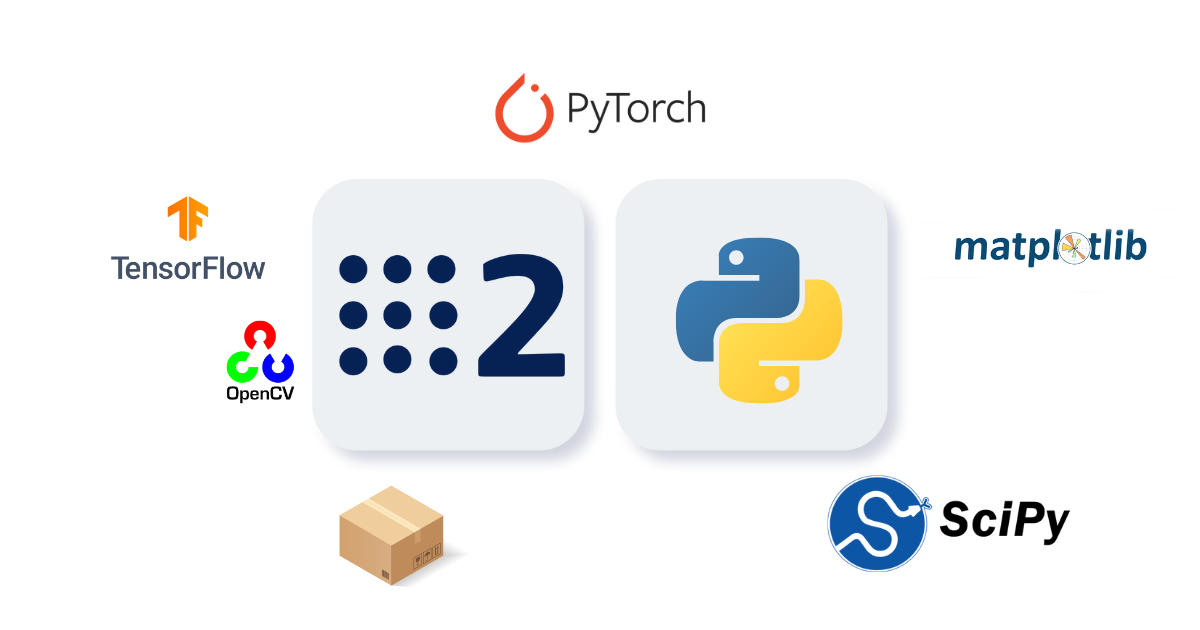Table of Contents
Introduction
When developing a project, we often fall short on features. Sometimes there are features that we need for example, 2D mapping of the environment, to progress in our project of autonomous robots. Implementing those features from scratch takes a ton of time. In those cases, we have libraries that already have those features, and we only need to understand them. Let’s clear up our thoughts about what we understand and what our learning outcomes will be after this article on the ROS2 Python package external modules.
There are some amazing Python libraries that you can integrate into your projects. But before that, let’sclarifyr the concepts of integerating libraries, modules.
Starting Point
No understanding of
- ROS2 Python Packages and Modules
- ROS2 Package Structure
- Creating Customized Modules
Learning outcomes
Easily able to
- Creating Custom Modules into ROS2 Packages
- Install External Libraries to your ROS2 Packages
- Concept clearning of Python Package, Library and module
Python Libraries Concept and its Terminologies
When I started working on python packages, there were some python jargons that were disturbing me. So lets first clear our concept about these python terminologies
Python Module
It is a single file containing Python code that defines functions, classes, and variables. It allows you to organise your code into reusable units. On the right, we have an example of a simple Python module namedmy_module.py:
To use this module in another Python file, you would import it like this:
# my_module.py
def greet(name):
return f"Hello, {name}!"
def add(a, b):
return a + bimport my_module
print(my_module.greet("Robotisim"))
print(my_module.add(9, 6))
Python Library
It is a collection of modules that provide specific functionality. Libraries can be built-in (provided with Python) or external (installed separately).
Here’s an example of using the built-in math library:
Externally built libraries can be used after installation through
pip install <name> # example numpyimport math
import numpy
print(math.sqrt(16)) # Output: 4.0
print(math.pi) # Output: 3.141592653589793Python Package
It is a directory that contains one or more modules. It also includes a special file called __init__.py to indicate that the directory should be treated as a package. Here’s an example of a simple package structure on the right.
In this example, module1.py and module2.py are Python modules, and__init__.py can be empty or contain initialization code for the package. To use this package, you would import its modules, as mentioned on the right.
my_package/
├── __init__.py
├── module1.py
└── module2.pyfrom my_package import module1, module2
print(module1.some_function())
print(module2.some_other_function())Lets summarize python concepts
- Python code is typically distributed and executed in its source form(code or script), without an explicit compilation step.
- In Python, packages are not compiled into a binary format like libraries in some other languages, such as C++.
- We bundle Python code into a form that is more easily distributable, using tools like
distutils.
This is where ros2 python packages comes in.
ROS2 Python Package Structure
When we create a python package using ROS2 command, we have couple of things to understand
ros2 pkg createThis is the command to create a new ROS2 package.--build-type ament_python: Specifies that the package will be built using the Ament build system for Python packages.--node-name vision_start: Specifies the name of the node that will be created in the package.- vision_pkg: specifies the name of the package.
ros2 pkg create --build-type ament_python --node-name vision_start vision_pkgWhen we execute this command, we see a package with a node automatically created with a fixed structure. This below structure is produced mainly for keeping standards fixed for compatibility between tools and ease of maintenance.
- For example : the convention of having the package name match the directory name inside the
srcdirectory is not a strict requirement, but it is a recommended best practice.
vision_pkg/
├── package.xml
├── CMakeLists.txt
├── setup.py
├── src/
└── vision_pkg/
├── __init__.py
└── vision_start.pyCreating and Utilising Custom Module
Lets start by understanding example directory tree for a Python package with custom modules for Object detection and Object tracking
vision_pkg/
├── package.xml
├── setup.py
└── src/
└── vision_pkg/
├── __init__.py
├── vision_start.py
├── obstacle_detection/
│ ├── __init__.py
│ └── detector.py
└── object_tracking/
├── __init__.py
└── tracker.py#!/usr/bin/env python3
import rclpy
from vision_pkg.obstacle_detection.detector import detect_obstacles
from vision_pkg.object_tracking.tracker import track_objects
class VisionNode(Node):
def __init__(self):
super().__init__('vision_node')
self.get_logger().info('Vision node initialized')
def modules(self, image,objects):
obstacles = detect_obstacles(image)
tracks = track_objects(objects)
...That is not it; you need to mention in the the setup.py file any library you are using for the feature you have implemented,, for example:
install_requires=[
'setuptools',
'opencv', # Assuming that we using OpenCV for obstacle detection
'kalmanfilter', # Assuming that we using Kalman filter for object tracking
'rclpy',
],Similar questions to answer?
- How do I add external Python libraries to a ROS 2 Python package?
- Answer: You can add external Python libraries to a ROS 2 Python package by including them in the
install_requireslist in yoursetup.pyfile. For example, if you’re usingnumpyfor array operations, you can add'numpy'to theinstall_requireslist.
- Answer: You can add external Python libraries to a ROS 2 Python package by including them in the
- Can I use custom Python modules in my ROS 2 Python package?
- Answer: Yes, you can use custom Python modules in your ROS 2 Python package. Simply create your custom modules in a directory within your package, and import them in your Python nodes as needed.
- How do I ensure that my ROS 2 Python package includes all necessary dependencies?
- Answer: To ensure that your ROS 2 Python package includes all necessary dependencies, list them in the
install_requireslist in yoursetup.pyfile. When you build and install your package, these dependencies will be installed automatically.
- Answer: To ensure that your ROS 2 Python package includes all necessary dependencies, list them in the

